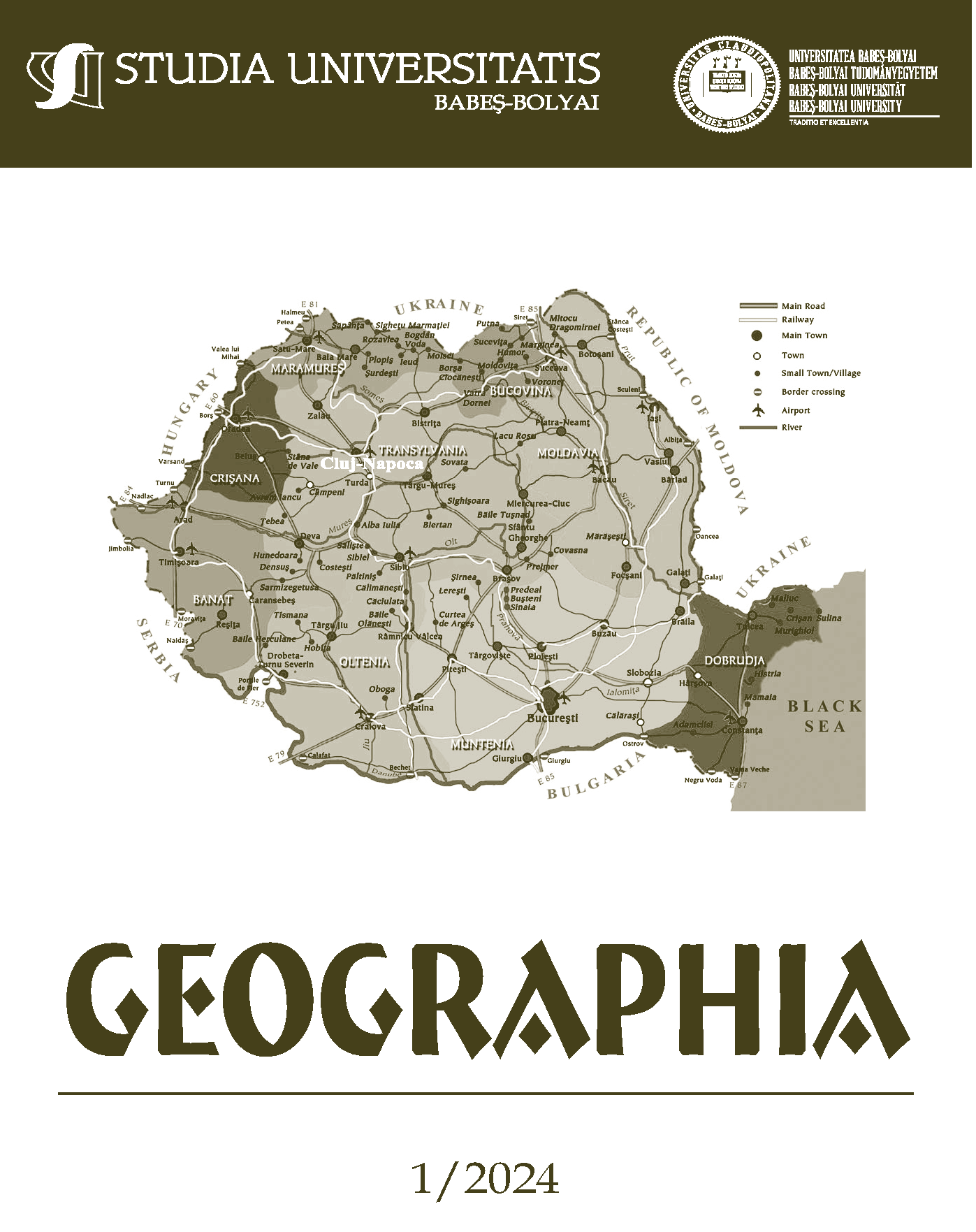Model Analysis Principles for the Design of Public Spaces in Bistrița-Târgu Mureș Urban Axis
DOI:
https://doi.org/10.24193/subbgeogr.2024.1.03Keywords:
public space, design principles, planning, Bistrița-Târgu Mureș urban axisAbstract
Model Analysis Principles for the Design of Public Spaces in the Bistrița-Târgu Mureș Urban Axis. The physical urban terrain across cities continually evolves through insights, consultations, deliberate redesigning or random acts by community members and natural forces that reshape the urban landscapes and how urban spaces are used. This research establishes a set of normative principles that planners and others can use when planning and regulating the design and management of public space. Data were collected in the period March 2023 – January 2024. Based on a comprehensive analysis of public space in the city, the paper sets out a number of general principles relating to the essential, but often missing, strategic planning framework for developing and regenerating public spaces, providing seven more detailed considerations for assessing the quality of public space design and a proposal for spatial planning. This is an unreservedly positive framework for shaping public space, based on the idea that public spaces in our cities come in many different shapes and forms, but that together they add immense value to the experience and potential of urban areas. The research takes place in the Bistrița-Târgu Mureș urban axis, the field research carried out as part of the study results in a set of three principles of urban spatial planning that examine proposals for the design of public spaces.
References
Arabindoo, P., (2014), Urban Design in the Realm of Urban Studies, Explorations in Urban Design, ed. M. Carmona, Ashgate, London.
Baimyrzaeva, M., (2018), Beginners’ Guide for Applied Research Process: What Is It, and Why and How to Do It?, University of Central Asia, 10-26.
Biddulph, M., (2012), The Problem with Thinking About or for Urban Design, Journal of Urban Design, 17 (1), 1–20.
Boyer, M., (1993), The City of Illusion: New York’s Public Places, The Restless Urban Landscape, ed. P. Knox, Prentice Hall, New Jersey.
Carmona, M., (2014), The Place-Shaping Continuum: A Theory of Urban Design Process, Journal of Urban Design, 19 (1), 2–36.
Carmona, M., (2015), Re-theorising Contemporary Public Space: A New Narrative and a New Normative, Journal of Urbanism, 8 (4), 374–405.
Carmona, M., Magalhães, C.D., & Hammond, L. (eds.) (2008), Public Space: The Management Dimension, Routledge. HTTPS://DOI.ORG/10.4324/9780203927229
Carmona, M., Tiesdell, S., Heath, T., and Oc, T., (2010), Public Places, Urban Spaces: The Dimensions of Urban Design, 2nd ed., Routledge, London.
Carmona, M., & Wunderlich, F., (2012), Capital Spaces, the Multiple Complex Public Spaces of a Global City, Routledge, London.
Cho, Im Sik, Heng, C.K., Trivic, Z., (2016), Reframing Urban Space, Urban Design for Emerging Hybrid and High-Density Conditions, Routledge, Abingdon.
Commission for Architecture and the Built Environment (2004), The Value of Public Space, How High-Quality Parks and Public Spaces Create Economic, Social and Environmental Value, CABE Space, London.
Corbett, N., (2004), Transforming Cities, Revival in the Square, RIBA, London.
Crowhurst Lennard, S., & Lennard, H., (1995), Livable Cities Observed, Gondolier Press, Carmel, CA.
Gehl, J., & Gemzoe, L., (2000), New City Spaces, The Danish Architectural Press, Copenhagen.
Graham, S., & Marvin, S., (2001), Splintering Urbanism: Networked Infrastructures, Technological Mobilities and the Urban Condition, Routledge, Abingdon.
Hajer, M., & Reijndorp, A., (2001), In Search of New Public Domain, NAI Publishers, Rotterdam.
Jacobs, J., (1961), The Death and Life of Great American Cities, Random House, New York.
Lefebvre, H., (1968), Le Droit à la Ville, Anthropos, Paris.
Light, A., & Smith, J., (1998), Philosophy and Geography II: The Production of Public Space, Rowman and Littlefield, Lanham.
Malone, K., (2002), “Street Life: Youth” Culture and Competing Uses of Public Space, Environment and Urbanization, 14 (2), 157–168.
Minton, A., (2009), Ground Control, Fear and Happiness in the Twenty-First Century City, Penguin Books, London.
Mitchell, D., (1995), The End of Public Space? People’s Park, Definitions of the Public Democracy, Annals of the Association of American Geographers, 85 (1), 108–133.
Monclus, F., (2003), The Barcelona Model and an Original Formula? From ‘Reconstruction’ to Strategic Urban Projects (1979–2004), Planning Perspectives, 18 (4), 399–421.
Nemeth, J., (2012), Controlling the Commons, How Public is Public Space?, Urban Affairs Review, 48 (6), 811–835.
Newman, O., (1973), Defensible Space: People and Design in the Violent City, Architectural Press, London.
OECD (Organization for Economic Co-Operation and Development) (2002), Proposed Standard Practice for Surveys on Research and Experimental Development (p. 77), Organization for Economic Co-Operation and Development.
Palys, T., & Atchison, C., (2021), Research Methods in the Social and Health Sciences, Sage Publishing.
Parnell, S., & Pieterse, E., (2015), Translational Global Praxis: Rethinking Methods and Modes of African Urban Research, International Journal of Urban and Regional Research, 40, 236-246.
Sennett, R., (1990), The Conscience of the Eye, the Design and Social Life of Cities, Alfred Knopf, New York.
Sorkin, M., (2009), The End(s) of Urban Design, in: Urban Design, ed. A. Krieger and S. Saunders, University of Minnesota Press, Minneapolis.
UN-Habitat (2013), Global Public Space Toolkit from Global Principles to Local Policies and Practice, United Nations Human Settlements Programme, Nairobi.
Webster, C., (2001), Gated Cities of Tomorrow, Town Planning Review, 72 (2), 149–170.
Downloads
Published
How to Cite
Issue
Section
License
Copyright (c) 2024 Studia Universitatis Babeș-Bolyai Geographia

This work is licensed under a Creative Commons Attribution-NonCommercial-NoDerivatives 4.0 International License.





 ©Studia Universitatis Babeş-Bolyai Geographia. Published by Babeș-Bolyai University.
©Studia Universitatis Babeş-Bolyai Geographia. Published by Babeș-Bolyai University.